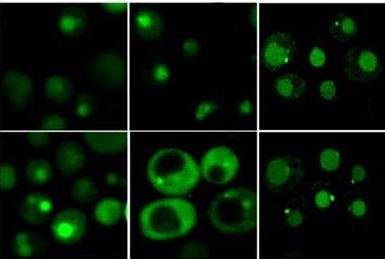Dr. Ami Navon and Prof. Zebulon Elazar, two scientists from the Weizmann Institute of Science, recently discovered that the two molecular clusters they are studying cooperate in times of distress

Often, when two people become friends, their family members and even their dogs become friends as well. In the case of Dr. Ami Navon and Prof. Zebulon Elazar, two scientists from the Weizmann Institute of Science, friendship also includes molecules: they recently discovered that the two molecular aggregates they are researching cooperate in times of distress.
Dr. Ami Navon studies the proteasome, the cell's main system for "eliminating waste": this molecular aggregate breaks down and recycles damaged proteins, such as, for example, those that are not folded correctly and therefore cannot perform their function in the body. Prof. Zebulon Elazar studies the lysosome, another recycling machine, which also performs decomposition operations, but not in a targeted way like the proteasome. For example, if the cell becomes cancerous, the lysosome may "wholesale" destroy whole parts of the cell, to cause the cell to commit suicide.
Dr. Navon decided to find out if these two machines of destruction are cooperating. The answer to this question is important, because improper destruction of proteins can be fatal to human health. Malfunctions in protein recycling can lead to diseases such as cystic fibrosis and neurodegenerative diseases such as Parkinson's and ALS. Hyperrecycling, however, is characteristic of multiple myeloma and autoimmune diseases.
To examine the relationship between the proteasome and the lysosome, Dr. Navon and postdoctoral researcher Dr. Edith Kerio, both from the Department of Biological Control, collaborated with Prof. Elazar and postdoctoral researcher Dr. Nira Amar from the Department of Biological Chemistry. The results of their research, published in the scientific journal Journal of Biological Chemistry, show that the proteasome and the lysosome can indeed help each other when needed. Sometimes the proteasome has difficulty performing its function, and a protein destined for degradation accumulates in the cell. In this case the lysosome comes into action. In a study done on yeast, the scientists showed how this happens: in a cellular process called "autophagy" a "tag" is attached to mark the accumulated protein, which signals to the lysosome that its help is needed. After that, the molecular components of autophagy "escort" the accumulated protein to the lysosome, which efficiently breaks it down. It so happens that when the cell's primary recycling machine malfunctions, the secondary recycling machine takes over.
Based on these findings, it will be possible in the future to develop new approaches to the treatment of diseases characterized by abnormal breakdown of proteins. For example, if the proteasome is not working properly, it may be possible to increase its activity with the help of the lysosome - just as good friends help each other in times of need.
